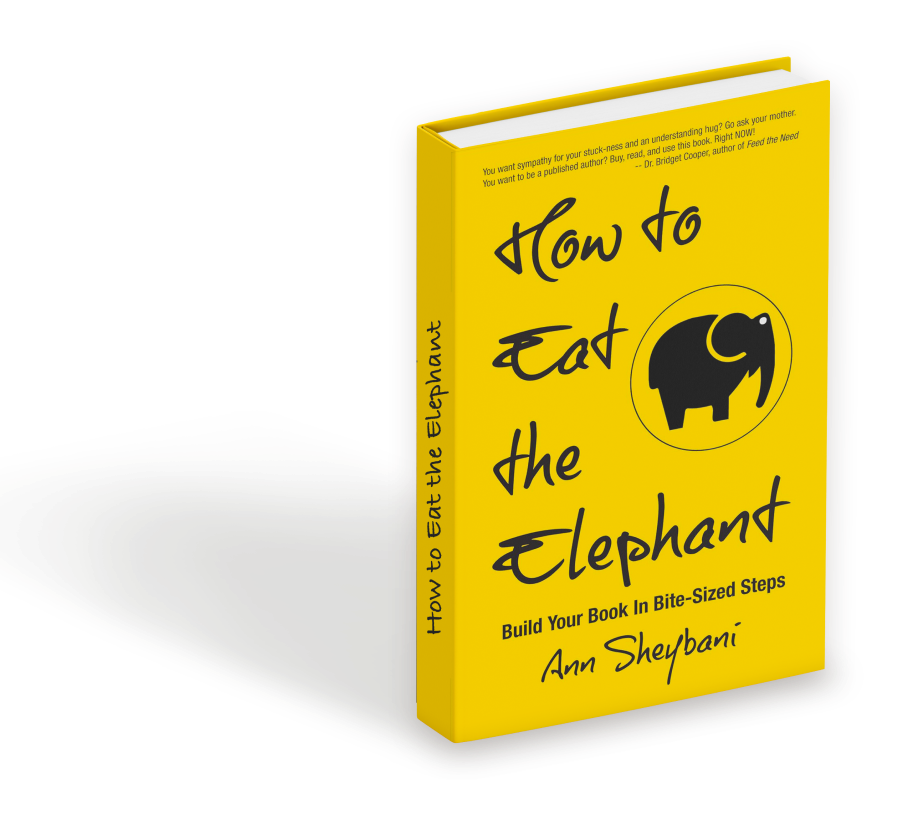You may be really excited about the prospect of writing a book for your business, but let’s take some time to strategize before you go sinking all that time and effort into such a project.
First, you’ll need to pause long enough to consider the outcome you’re after.
For coaches, speakers, and other service professionals, the outcome I’m talking about is usually one, or a combination of several things.
By writing a book we’re looking to:
- Attract ideal clients
- Impact others lives and effect radical change
- Inspire people by offering them our perspective, our hard-won experience so we can save them time and pain
- Spell out our unique process for fixing a specific problem once and for all
- Become known as an expert in our field
- Outline our message in a clear, concise way
- Improve our business status, marketability, and profitability. In other words, make more money
So, how do you attract clients with a book, namely yours? How do you inspire massive action, a change in paradigm, a veritable movement? How do you claim the lofty title of expert in your field? Remember, these are the results we’re after by writing this book.
Well, you’ve got to establish a few things for yourself (and therefore your audience) before you start banging away on the keyboard for months on end all willy-nilly, otherwise, you’ll wind up with a textbook no one wants to read, or worse, a 750-page autobiography that would bore your own mother to tears.
Let’s list these things one by one.
You must have a clear target market, a desirable promised result, and a list of associated benefits
You’ll want to be rock solid on a few foundational things in your business or this book you’re about to write is going to get awfully hazy PDQ.
First, you must be clear on whom you serve. Do you help mothers of twins, cowboys who live in Detroit, or professional paintballers?
Second, you must understand the needs and desires of your target market (a.k.a. your reading audience) and determine the biggest result your clients get when they hire you. Do you help those moms find a support system so they can go back to work? Do you help those cowboys rope more calves in half the time, all while avoiding traffic? Do you help paintballers repurpose those funny paint tubes so they can save more money?
Third, you have to be clear on the deep-rooted benefits associated with that big result. The deep-rooted benefits I’m referring to are the financial, emotional, physical, and spiritual benefits that accompany that one big result they’re after.
Deliver that one big promise with your stories; demonstrate the deep-rooted benefits as well, and you’re on your way to having a compelling book. And a big, fat business.
Your book introduction should include a dramatization of the problem you mean to solve; your expert positioning story; and an allusion to your proven system, the one that will get the desired result.
In other words, we need a clear problem right out of the starting gate. We need to show our reader what it feels like to have this problem in a very visceral way.
We also need to understand why you get the problem as well as you do, why you know more than the average bear on the topic.
We finally need to see that you’ve developed a system to fix this problem. Well, how did that come about? Who else have you helped work through your process and get the promised results?
By the time she finishes reading this book, how will your reader’s life be different? How will her life improve physically, finically, emotionally, and spiritually? (Yah, that business stuff again.) In other words, what’s the endgame, the big promise you mean to deliver on?
Your book must include stories with a clear point
Before you go off on the ole’ teaching track, spewing facts, statistics, concepts, and instructions, you need to ground the reader by dramatizing an idea through a story. According to scientific studies, our brains light up like the fourth of July when we read about smells, sounds, tastes, touch, and sights. It’s what our minds want. It’s the details that keep us grounded and wanting more.
Readers get lost without the supporting story. If you make an important point, you’ve got to support it with a story or you’ll lose your reader. Load us up with concepts, and we’ll drop your book, wander off to the café, and order coffee.
That being said, if you tell us a story, make sure it has a point. Writers love to tell their stories, share their triumphs along the journey, but we must make our story relevant to the reader by stepping out of it and expounding upon the lessons, the buried concepts. We must draw out the universal ideas and teaching points. There’s nothing worse than reading about your Aunt Edna if we can’t figure out the relevance.
Your book must have a clear scope and structure
The reader wants to be taken on a clear path from Pain Island to Pleasure Island, not dragged on a wild goose chase over hill and dale. Just because you’re capable of throwing in the kitchen sink doesn’t mean we want it there. We want to start at the beginning, right smack dab in the middle of the pain associated with our big problem. We want to be able to feel it, viscerally, so we know you’re talking to us, that you get it. Then we want to end on a happy note, experience paradise. We want a clear description of how good it will feel to finally solve that nasty problem, how solving it will affect all areas of our life. In between these two bookends, Pain and Pleasure Island, we want a series of clear steps that will take us through the transformation, that will walk us through your system, that will get us the very result you’ve promised us.
You must wrap it all up with a call to action.
What do you want the reader to do after they put your book down? Do you know? Let me break this question down a little bit. How can your reader incorporate this information, this philosophy, into his or her life? How can this new way of thinking continue to open up the vista, make life better financially, physically, emotionally, spiritually? What next step should the reader take to implement the information you’ve just given him? That will guarantee he take action, not shove your book on the shelf next to the other 546 paperbacks he’s purchased but never did anything with? If you were to give him further marching orders, what would they look like?
And, more importantly for those running a business, how would you like him to engage with you on a deeper level once he’s done reading your book? What do you have by way of offerings that would serve him, that would further ensure the transformation? Should he visit your website and download a pdf that will expound upon a concept in your book? Should he go to your website and schedule an exploratory call to see if one-on-one coaching would take him to the next level? Should he purchase a six-week course to hone these skills you’ve just taught him? If so, how can he do that? In other words, where can you take readers, what related offers can you make them? How can you capture their information and continue to build on the relationship?
The whole goal of this exercise is to give potential clients information in such a way that will allow them to make progress and see you as the solution to their very real problem. Keep them reading, keep them interested, and you’re that much closer to turning them into a lifelong customer.

